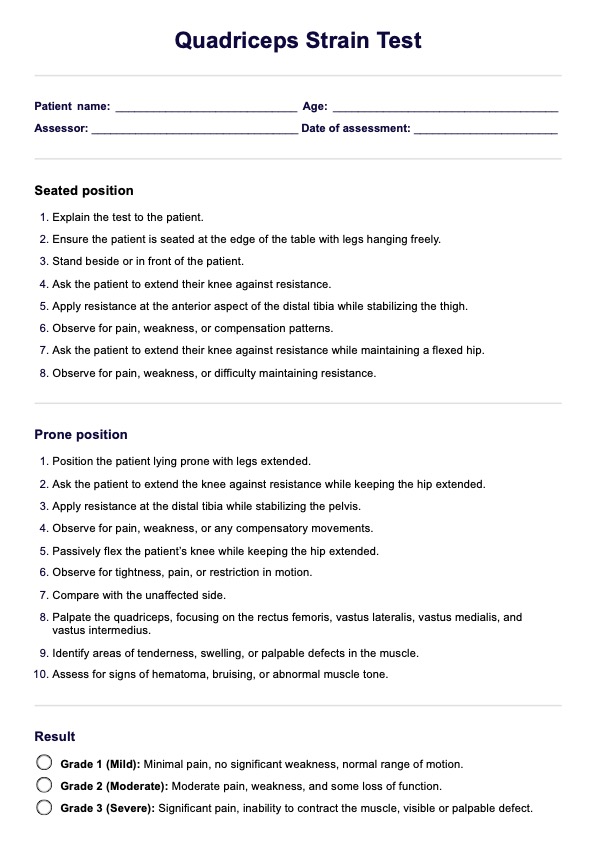A quadriceps strain typically feels like a sharp pain or pulling sensation in the front of the thigh, often accompanied by muscle tightness and tenderness. Depending on the severity, the pain can range from mild discomfort to intense pain, making movement difficult. Healthcare providers rely on clinical examination to diagnose quadriceps strains and determine the extent of the muscle injury.

Quadriceps Strain Test
Get access to a free Quadriceps Strain Test template. Learn how to interpret results and streamline your documentation with a free PDF.
Quadriceps Strain Test Template
Commonly asked questions
The healing time for a quadriceps strain depends on its severity. Mild and moderate quadriceps strains generally heal within 2 to 6 weeks, while more severe cases can take several months with proper rehabilitation. Rest, therapy, and strategies to decrease blood flow to the affected area during the acute phase help prevent further injury and promote recovery.
Walking on a Grade 3 quadriceps strain is extremely difficult due to intense pain, significant muscle weakness, and possible structural damage. This severe muscle injury often results in a palpable defect or indentation in the muscle, making weight-bearing painful and unstable. To avoid further injury, immediate medical attention is required, and treatment may involve immobilization, rehabilitation, or even surgical intervention in some cases.
EHR and practice management software
Get started for free
*No credit card required
Free
$0/usd
Unlimited clients
Telehealth
1GB of storage
Client portal text
Automated billing and online payments











